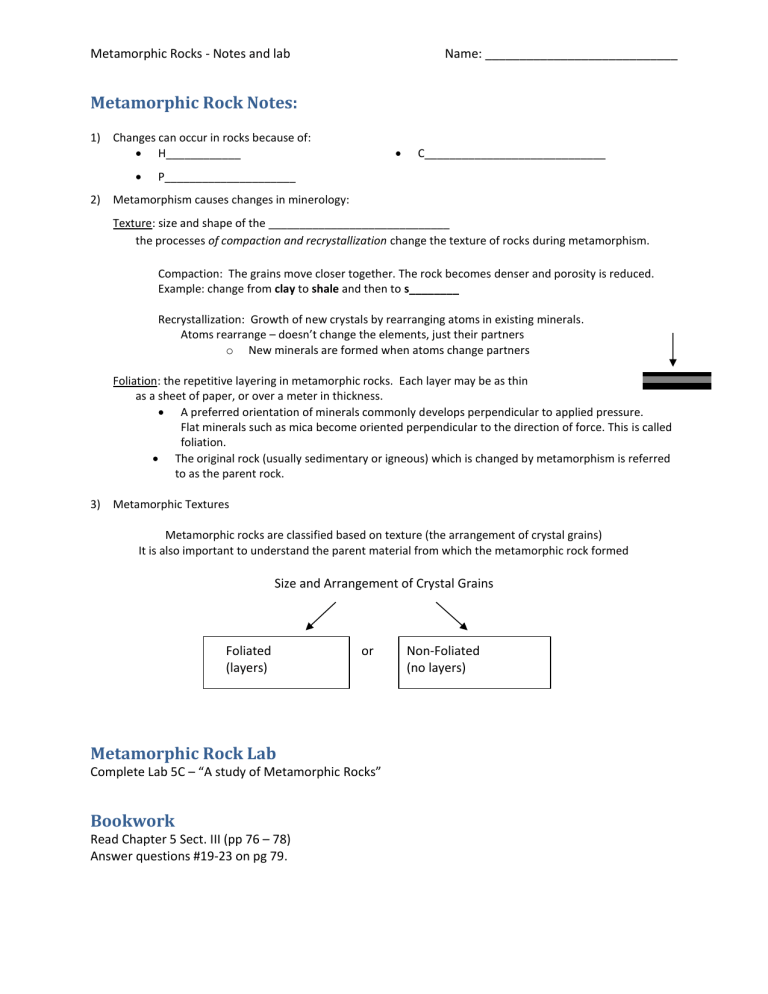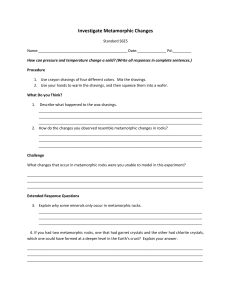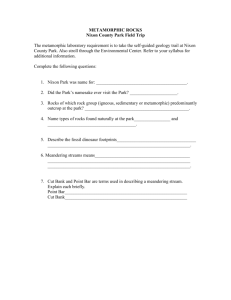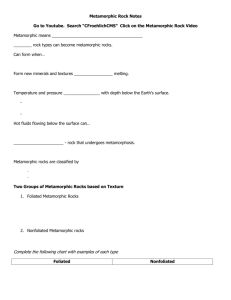Metamorphic Rocks: Notes and Lab for High School

Metamorphic Rocks - Notes and lab Name: ____________________________
Metamorphic Rock Notes:
1) Changes can occur in rocks because of:
H____________
P_____________________
C_____________________________
2) Metamorphism causes changes in minerology:
Texture: size and shape of the _____________________________ the processes of compaction and recrystallization change the texture of rocks during metamorphism.
Compaction: The grains move closer together. The rock becomes denser and porosity is reduced.
Example: change from clay to shale and then to s________
Recrystallization: Growth of new crystals by rearranging atoms in existing minerals.
Atoms rearrange – doesn’t change the elements, just their partners o New minerals are formed when atoms change partners
Foliation: the repetitive layering in metamorphic rocks. Each layer may be as thin as a sheet of paper, or over a meter in thickness.
A preferred orientation of minerals commonly develops perpendicular to applied pressure.
Flat minerals such as mica become oriented perpendicular to the direction of force. This is called foliation.
The original rock (usually sedimentary or igneous) which is changed by metamorphism is referred to as the parent rock.
3) Metamorphic Textures
Metamorphic rocks are classified based on texture (the arrangement of crystal grains)
It is also important to understand the parent material from which the metamorphic rock formed
Size and Arrangement of Crystal Grains
Foliated
(layers) or Non-Foliated
(no layers)
Metamorphic Rock Lab
Complete Lab 5C – “A study of Metamorphic Rocks”
Bookwork
Read Chapter 5 Sect. III (pp 76 – 78)
Answer questions #19-23 on pg 79.











